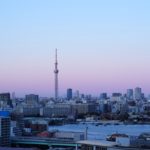Measures for dealing with COVID-19

COVID-19!!!
In PMP’s back garden, a large cruise ship is in quarantine and it feels like there are significantly less tourists in the area.
On February 1, 4 and 6 the Ministry of Health Welfare and Labor released information on coronavirus that has now been named COVID-19.
Given the concerns by many companies we are releasing this PMP News, but if you have other questions please do not hesitate to contact individually.
1. The approach to COVID-19 should be the same approach as with colds or seasonal flus, and appropriate etiquette should be observed when coughing or sneezing (using of face masks, tissues, handkerchiefs, sleeve to cover the mouth and nose), hand washing, gargling and sanitizing with alcohol.
Anyone who has been in Wuhan, or as interacted with anyone from Wuhan should consult with the local Health Authorities should they present with a cough or a temperature. If utilizing the hospital system, potential patients are to call ahead if they are presenting with a cough or temperature and have been in Wuhan, or as interacted with anyone from Wuhan.
2. Is it necessary to utilize Article 68 of the Health and Safety Act and prevent employees from coming to work?
On February 1 COVID-19 was added to the contagious disease list. Hence as per the Prevention of Infections Diseases Act, all those who have been diagnosed with COVID-19 can be required to be quarantined and prevented form working by their prefectural Governor. In the case of a positive diagnosis this must be observed. However, at present this does not make the individual subject to Article 68 (to follow) of the Industrial Safety and Health Act.
※Industrial Safety and Health Act:
Article 68 An employer, pursuant to Order of the Ministry of Health, Labour and Welfare, must prohibit workers who have contracted communicable diseases and other diseases specified by Order of the Ministry of Health, Labour and Welfare from working.
3. How to approach leave with COVID-19 patients
1)Those patients with COVID-19 are not allowed to work due to the relevant Prefectural Governor, however as the illness cannot be attributed to the Employer there is no need to pay the Non Work Allowance.
2)When the Employee takes leave due to a temperature or other symptoms
When an Employee requests leave then you can allow then sick leave as per standard policy. If they request you can allow them to utilize their paid annual leave or sick leave (if available).
However, should the Employers take measures to uniformly suspend those in the workforce with a temperature of 37.5C or higher, and as such the worker must rest, then the period of Non Work is deemed attributable to the employer and hence the Non Work Allowance must be paid. When the worker is put on leave the Ministry has requested regarding the payment of salaries that ample conversations take place, a Labor Management agreement be considered and a system put in place that enables workers be able to take leave in a peaceful frame of mind.
4. Paid Annual Leave
Annual Leave is granted on an as requested basis and workers cannot unilaterally demand annual leave. However, when considering the latest revision to the Labor Law and the requirement to ensure that Employees who are granted 10 days of leave or more in a year (12 month cycle) to take at least 5 days of their leave, and the Company can discuss with them the Employee on when to utilize, then it is certainly worth considering the utilization of this leave.












